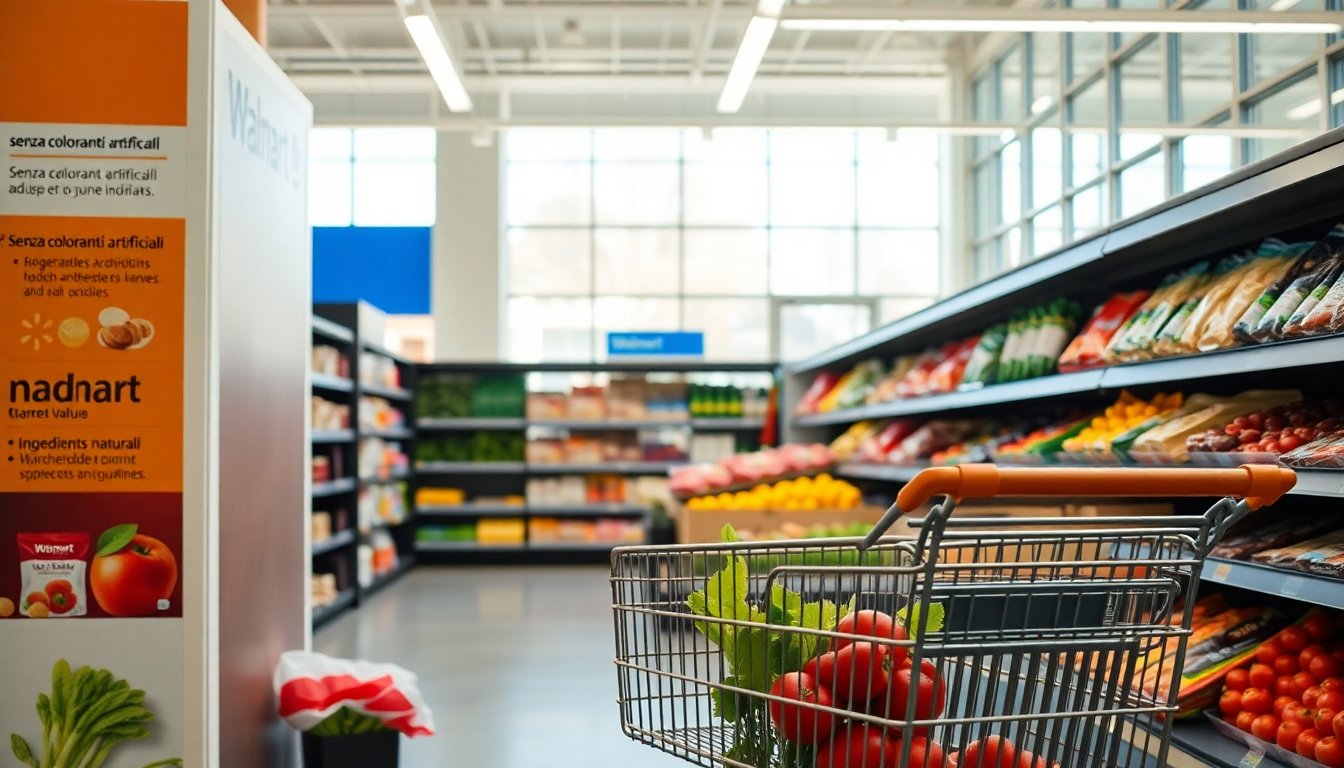Table of Contents
Walmart commits to eliminating artificial ingredients
Walmart has announced a major initiative to enhance the healthiness of its food offerings. On Wednesday, the retail giant revealed plans to remove synthetic dyes and various artificial ingredients from its store brands. The brands affected include Great Value, Marketside, Freshness Guaranteed, and Bettergoods, with a target date set for January 2027.
This decision is part of a broader movement within the food industry, influenced by public health advocates. Health Secretary Robert F. Kennedy Jr. has been a prominent supporter of this initiative, aimed at promoting healthier eating habits throughout the United States.
Impact on the food supply chain
Walmart, the largest grocery retailer in the United States, is set to implement significant changes that will affect the entire food supply chain. The company plans to eliminate approximately 30 ingredients, including certain artificial sweeteners and preservatives, from over 1,000 products. This decision is expected to influence a wide range of items, such as sports drinks, cake frosting, and cheese dips. Some of these ingredient changes are already being seen on store shelves as Walmart progresses with its gradual ingredient overhaul.
Specific ingredients under scrutiny
Key ingredients targeted for removal include titanium dioxide, often used as a food coloring, and azodicarbonamide, which aids in achieving uniform bread rise. As Walmart navigates this transition, maintaining affordable prices for consumers remains a top priority.
Consumer demand for natural ingredients
The trend towards natural ingredients represents a notable change in consumer preferences rather than just a corporate initiative. Scott Morris, senior vice president for food and private brands at Walmart US, emphasizes that an increasing number of shoppers are actively looking for products with simple and recognizable ingredients. Data indicates that more than half of Walmart’s customers routinely check food package labels for ingredient transparency. Morris stated, “The customer is just getting louder and louder on this,” highlighting that many of these ingredient changes have been in the works for quite some time.
Challenges of using natural alternatives
Shifting to natural ingredients presents specific challenges for manufacturers. Natural alternatives often struggle to replicate the vivid colors associated with synthetic dyes, resulting in less visually appealing products. Additionally, many natural dyes are derived from food sources, which may impart a subtle off-taste, as noted by industry experts. The stability of these natural dyes also complicates production, leading to increased costs and varied consumer reactions.
For example, General Mills faced significant backlash in 2016 when it reformulated its Trix cereal to incorporate all-natural ingredients, utilizing dyes extracted from radishes and turmeric. Following customer feedback, the company ultimately reverted to synthetic colors such as red 40 and yellow 6.
Walmart’s efforts to enhance product offerings
Walmart is addressing challenges related to natural colorings, especially in beverages, where achieving vibrant colors is difficult. Reports indicate that the retailer is considering innovative approaches, such as using clear liquids with colored packaging, to retain the visual appeal of its products. Additionally, baked goods present a complex challenge, as Walmart seeks natural dyes suitable for sprinkles, frostings, and cakes.
As consumer preferences evolve, Walmart’s initiative to eliminate artificial ingredients from its private label products marks a significant move toward healthier food options. This commitment not only positions Walmart as a leader in promoting better nutrition but may also encourage other retailers and manufacturers to reevaluate their ingredient selections.


